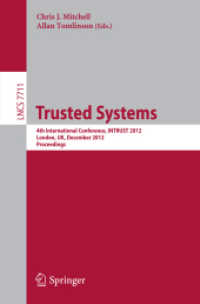- ホーム
- > 洋書
- > ドイツ書
- > Mathematics, Sciences & Technology
- > Physics and Astronomy
- > mechanics & acoustics
Full Description
Understandingthis simplified theory is much easier and the final step it to highlight the differences when moving to the general two-dimensional case.
This monograph first provides a systematic and thorough introduction to the simplified laminate theory based on the theory for bars and classical beam plate elements.








